
University of Erlangen–Nuremberg is a public research university in the cities of Erlangen and Nuremberg in Bavaria, Germany. The name Friedrich–Alexander comes from the university's first founder Friedrich, Margrave of Brandenburg-Bayreuth, and its benefactor Alexander, Margrave of Brandenburg-Ansbach.

Bioglass 45S5 or calcium sodium phosphosilicate, is a bioactive glass specifically composed of 45 wt% SiO2, 24.5 wt% CaO, 24.5 wt% Na2O, and 6.0 wt% P2O5. Typical applications of Bioglass 45S5 include: bone grafting biomaterials, repair of periodontal defects, cranial and maxillofacial repair, wound care, blood loss control, stimulation of vascular regeneration, and nerve repair.
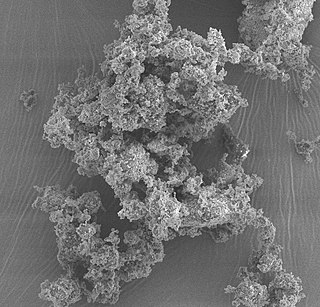
Bioactive glasses are a group of surface reactive glass-ceramic biomaterials and include the original bioactive glass, Bioglass®. The biocompatibility and bioactivity of these glasses has led them to be used as implant devices in the human body to repair and replace diseased or damaged bones. Most bioactive glasses are silicate based glasses that are degradable in body fluids and can act as a vehicle for delivering ions beneficial for healing. Bioactive glass is differentiated from other synthetic bone grafting biomaterials, in that it is the only one with anti-infective and angiogenic properties.
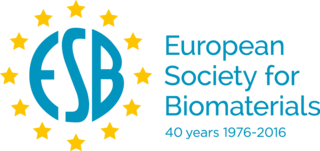
The European Society for Biomaterials (ESB) is a non-profit organisation that encourages research and spread of information regarding research and uses of biomaterials. Founded in March 1976, became a member of the International Union of Societies for Biomaterials Sciences and Engineering (IUS-BSE) at its conception, in 1979. It has approximately 750 members in 33 different countries worldwide (2017). It organises an annual meeting where recent developments mainly within academic research of biomaterials are presented.
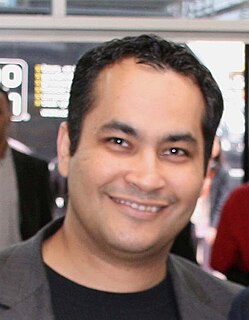
Ali Khademhosseini is the Director and CEO of the Terasaki Institute and former Professor at the University of California-Los Angeles where he held a multi-departmental professorship in Bioengineering, Radiology, Chemical, and Biomolecular Engineering and the Director of Center for Minimally Invasive Therapeutics (C-MIT). From 2005 to 2017, he was a Professor at Harvard Medical School, and the Wyss Institute for Biologically Inspired Engineering. His studies have been cited ~95,000 times. Khademhosseini is best known for developing hydrogels for tissue engineering and bioprinting.
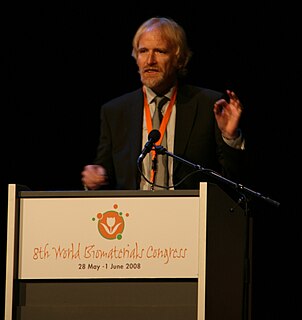
Clemens A. van Blitterswijk is a Dutch tissue engineer who contributed to the use of biomaterials to heal bone injuries, especially using osteoinductive ceramics. In collaboration with Jan de Boer and others, he has contributed to screening microtextures to study cell-biomaterial interactions, an approach termed materiomics.

Nicholas (Nikolaos) A. Peppas is a chemical and biomedical engineer whose leadership in biomaterials science and engineering, drug delivery, bionanotechnology, pharmaceutical sciences, chemical and polymer engineering has provided seminal foundations based on the physics and mathematical theories of nanoscale, macromolecular processes and drug/protein transport and has led to numerous biomedical products or devices.
The Journal of Biomedical Materials Research is a peer-reviewed scientific journals of biomedical material science. It was established in 1967. In 1974, it absorbed Biomedical Materials Symposium (1971–1974). In 1990, it absorbed the journal Journal of Applied Biomaterials (1990–1995). In 2002, it split into two parts, Journal of Biomedical Materials Research Part A, and Journal of Biomedical Materials Research Part B. The two parts are published by John Wiley & Sons.
Treena Livingston Arinzeh is Professor of Biomedical Engineering at New Jersey Institute of Technology in Newark, New Jersey. She is known for her research on adult stem-cell therapy. Arinzeh takes part in the American Chemical Society's Project Seeds program, opening up her lab for high school students from economically disadvantaged backgrounds for summer internships.
Peter Gumbsch is a German physicist and materials scientist. He is the director of the Fraunhofer-Institut für Werkstoffmechanik IWM, in Freiburg, Germany and professor for mechanics of materials at the Karlsruhe Institute of Technology (KIT).
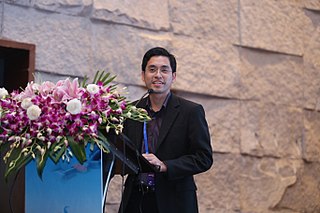
Xian Jun Loh is a Singaporean polymer chemist who works in the inter-disciplinary field of biomaterials. He is the Executive Director of the Institute of Materials Research and Engineering of the Agency for Science, Technology and Research and a professor at the Nanyang Technological University. He is currently the Vice-President of the Singapore National Institute of Chemistry.
Samit Kumar Nandi is an Indian veterinary surgeon, radiologist and a professor at the West Bengal University of Animal and Fishery Sciences. Known for his use of biomaterials in animal orthopedic surgeries, Nandi's studies have been documented by way of a number of articles and ResearchGate, an online repository of scientific articles has listed 97 of them. Besides, he has published three books, which include Text Book On Veterinary Surgery and Radiology and Development and Applications of Varieties of Bioactive Glass Compositions in Dental Surgery, Third Generation Tissue Engineering, Orthopaedic Surgery and as Drug Delivery System. He has also contributed chapters to books published by others.and Characterization of Biomaterials. The Department of Biotechnology of the Government of India awarded him the National Bioscience Award for Career Development, one of the highest Indian science awards, for his contributions to biosciences in 2008.
Rylie Green is an Australian biomedical engineer who is a Professor at Imperial College London. She works on bioactive conducting polymers for applications in medical electronics.
Vijay Kumar Thakur is an Indian chemist, material scientist and Professor known for his research in the field of polymers, nanotechnology, manufacturing engineering, sustainable chemistry and materials science. He has published over 300 SCI journal articles, 52 Books and two USA patents. He sits on the editorial board of several SCI journals.
Sarah Harriet Cartmell is a British biomaterials scientist and Professor of Bioengineering at the University of Manchester. She specializes on the potential use of electrical regimes to influence cellular activity for orthopaedic tissue engineering applications.
Julie Elizabeth Gough is a Professor of Biomaterials and Tissue Engineering at The University of Manchester. She specializes on controlling cellular responses at the cell-biomaterial interface by engineering defined surfaces for mechanically sensitive connective tissues.
Ipsita Roy is a British-Indian materials scientist who is a Professor at the University of Sheffield. Her research considers natural polymers of bacterial origin for medical applications. She was elected to the New York Academy of Sciences in 1997 and serves as the Editor of the Journal of Chemical Technology & Biotechnology.
Elizabeth Cosgriff-Hernandez is an American biomedical engineer who is a Professor at the University of Texas at Austin. Her work involves the development of polymeric biomaterials for medical devices and tissue regeneration. She also serves on the scientific advisory board of ECM Biosurgery and as a consultant to several companies on biostability evaluation of medical devices. Cosgriff-Hernandez is an Associate Editor of the Journal of Materials Chemistry B and Fellow of the International Union of Societies for Biomaterials Science and Engineering, Biomedical Engineering Society, Royal Society of Chemistry, and the American Institute for Medical and Biological Engineering.
Helen Haiyan Lu is a Chinese American biomedical engineer and the Percy K. and Vida L. W. Hudson professor of biomedical engineering at the Columbia University Fu Foundation School of Engineering and Applied Science. Her work focuses on understanding and developing therapies in complex tissue systems, especially the interface between soft tissue and bone.








